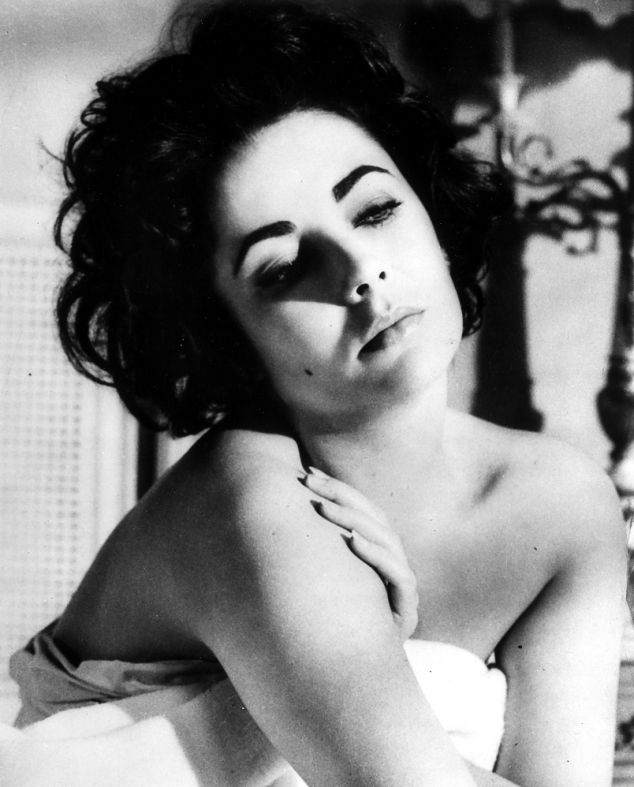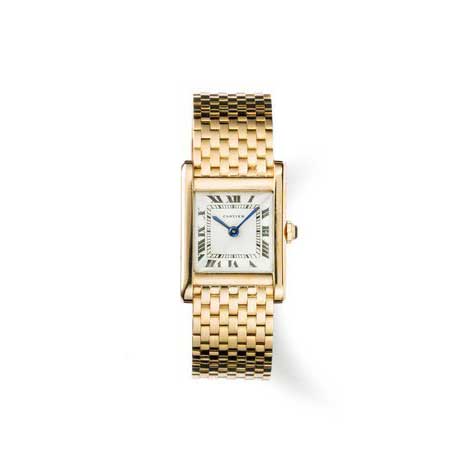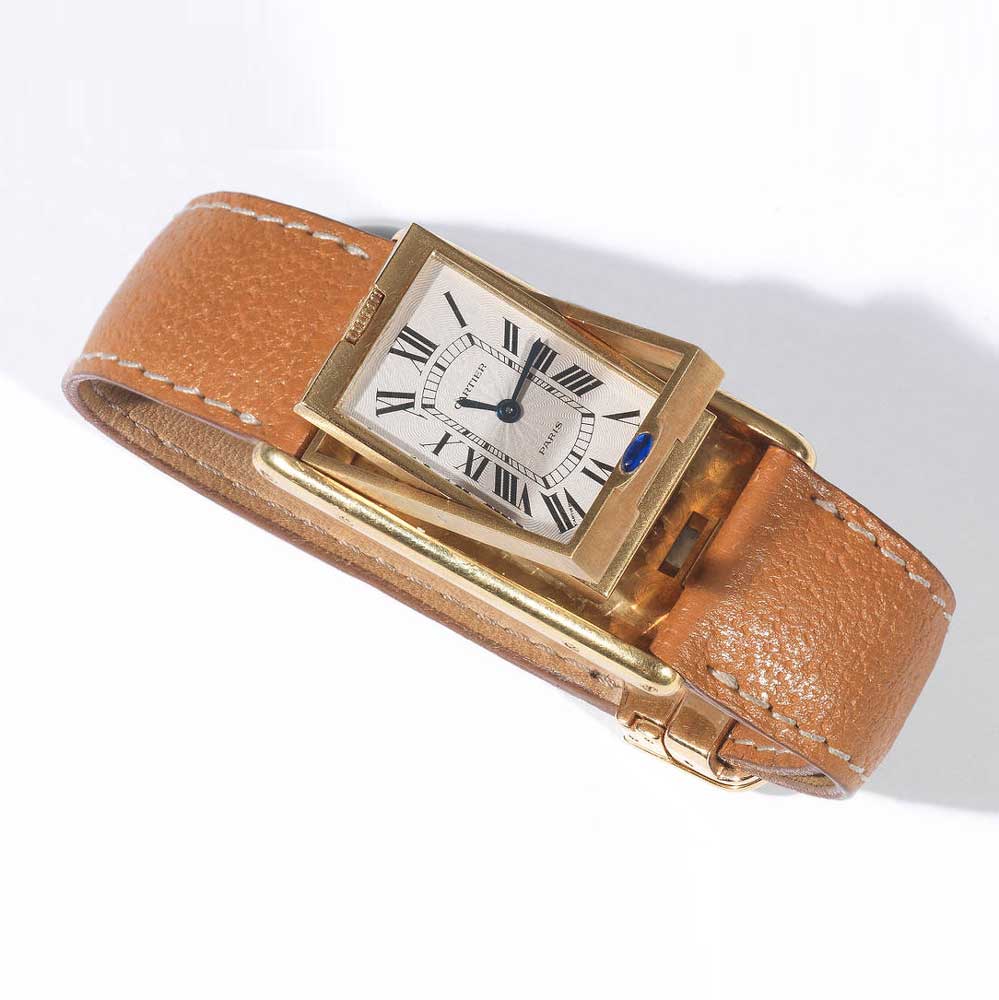Cartier
100 Years of the Cartier Tank
Cartier
100 Years of the Cartier Tank
In the Beginning (1917-1922)
It was exactly 100 years ago that Cartier created its first Tank watch. But to call that watch a creation is a little odd because that was, in fact, a prototype given to the commander of American Expeditionary Forces in Europe, General John Pershing.
Since then, the Tank has always been a source of inspiration — for not only Cartier — but for the industry at large. And while nothing has been confirmed yet, I am sure that that sometime this year, La Maison will throw a birthday party for the Tank, the likes of which we’ve never seen before.
While we anticipate the party of the year, let’s discuss the key models that make up the Tank’s grand story. Of course, there are many iterations of the Tank, but let’s set this straight that it is the Tank Normale that will be turning 100 this year. And that’s why, at least for me, this is the Grandfather of all Tanks.
In the beginning the watch was simply called ‘the Tank’, and Cartier at the time only had a few watches in their collection. It was only named ‘Tank Normale’, after the Tank Louis Cartier was created.
The Tank Normale was the inspiration for many future creations. The Tank Francaise (1996) for instance, created almost 80 years later, has quite some similarities.
The Tank Normale, which was never released in large numbers, was Elizabeth Taylor’s preferred watch for many years and she and also the Prince of Nepal, were both wearing their Tank Normale on a 5-row link bracelet, but in general the watch was sold on a leather strap.

Elizabeth Taylor in 1960, aged 28

Tank wristwatch purchased by Elizabeth Taylor from Cartier in Paris in 1959; gold case and bracelet with enamel dial (© Cartier Collection 2006 Photo: Nick Welsh)
Four years later Louis Cartier created his second Tank watch, the Tank Cintrée (1921), which was a real departure in shape and dimensions. No watch in the collection was so curved and built as slim as the Tank Cintrée.
Over the years there have been many different versions, not only dial versions, but also models with different dimensions, however, the watch was always released in small editions of 50 to 100 pieces. The Tank Cintrée is by far the most elegant, most sought after and most desired Tank watch in the Cartier collection and can be called the gentleman’s Tank!
But it has been a while since we have seen the watch in the collection. The last versions of this watch were released in gold and in platinum, almost 10 years ago, in 2008 to be more precisely. I am talking about a time only model, equipped with a mechanical 9780 MC caliber, produced by Jaeger-LeCoultre and a two time zone model that was created for Asia, equipped with two mechanical 430MC calibers by Piaget. The Tank Cintrée in general is very rare and it usually does well at auctions, recently an almost vintage version from 1970 was auctioned at Phillips and was sold for CHF 28,750. The one with red Arabic numerals, shown here, was a custom order from the same year.
1922 Tank Louis Cartier
The Louis Cartier Tank, with its smoother and rounder lines, followed the Tank Normale in 1919, in shape and style. This is the model that became the jewel in the crown of the Tank collection and most people see this watch as the Cartier Tank.
Originally this new design, in the early days available in yellow gold and platinum, was almost as small as the Tank Normale, but lately the model has undergone quite a few changes and become available as the Tank Louis Cartier Automatic, and in 2006, as the LC Tank XL.
With case dimensions of 30 x 39.2mm and powered with the ultra-flat 9701MC mechanical caliber by Piaget, this was the ideal version of the Tank Louis Cartier. The model was again re-designed and enlarged to 34.9 x 40.4mm in 2012 and became the flattest Tank in the collection ever, thanks to the 430MC caliber. The Tank Louis Cartier is very comfortable to wear and is probably the most discreet Tank ever.
1922 Tank Chinoise
The square and exotic, Tank Chinoise, with its unique form inspired by the architecture of Chinese temple porticos, made its debut in 1922. The Tank Chinoise, with its beautiful domed crystal, belongs to the more exclusive rank of Tank watches and is appreciated by collectors and those who know the brand better.
In counterpoint to the brancards, two horizontal bars straddle the watch face and protrude slightly on either side, mimicking the interplay of interlocking lintels left in full view. The balance of the form shifts and re-centers on the square in its devotion to clean, pared-down lines.
2007 was the last a version of the Chinoise appeared.
1923 Tank Obus
The Tank Obus was created in 1923, just a year after the Tank Chinoise and both of them are the most unlikely looking Tanks that Cartier ever created.
Although the Tank Chinoise always created demand among collectors, the Tank Obus was not that lucky. The handsome looking watch with its sensual bullet lugs, which were not really Tank worthy, has been launched over the years with various dial layouts, from pretty simple with just the rail with seconds indication, to the busier versions, like the last Tank Obus, which was released in 1998 for Collection Privée, Cartier Paris.
For a short period only there has even been a rectangle version in platinum with a mechanical movement.
1928 Tank à Guichet
As progressive as always, Cartier created a Tank without hands, the Tank à Guichet, in 1928. A unique digital watch that was inspired by early pocket watches with jumping hours.
With the advent of the train and automobile, speed was everything: The dial symbolized modernity. Louis Cartier based the aesthetic of the Tank à Guichet on a watchmaking complication, namely, the jumping hour.
In these perfectly pared-down watches, the glass, dial and hands were replaced by plaques, pierced with apertures that displayed segments of the discs. One indicating the hours and the other minutes.
To indicate the hours and minutes, the caliber used is based on a jumping and on a sweep mechanism. Cartier not only played around with the layout and form of the apertures, but also with the positioning (at 12 o’clock or 3 o’clock) and the style of the crown: Sapphire cabochon, fluted or notched and flat crown without a sapphire.
While some early models had the crown at 12 o’clock , like one of the later versions in yellow gold, that was released in 1996, in a limited edition of just three pieces, the last two models that were released in 1997 and 2005, had the crown placed at position 3.
Brushed platinum or gold, were generally used to give a matte appearance.
150 Pieces in platinum were produced in 1997 for the 150th anniversary of La Maison and 100 pieces in pink gold for Collection Privée, Cartier Paris were the last versions that were released. Both models were sold out in no time and wherever they pop up in an auction, people tend to pay handsomely to get their hands on one.
1931 Tank Etanché
The Tank Etanché, originally launched in 1931, was the first water resistant Tank watch and is almost unknown, even among experienced collectors. The production was apparently very limited and very few photos of the model exist.
The model never appeared as a re-issue in important collections later, like for instance Collection Privée, Cartier Paris. However, in 2001 the Tank Etanché came back in another likeness when it was called the Tank á Vis.
The case of the watch is very similar to that of the Tank Etanchée and it became the Tank that was probably the only version, with a lunette. The newer Tank à Vis shares that same lunette with the Tank Etanché, but it was now strongly attached to the case, with four prominent screws, like the Santos watch, giving the watch a sportier outlook.
The Tank à Vis model was launched in 2001. Cartier presented it in the Collection Privée, Cartier Paris series in four variations: A Time only model in gold, with a mechanical caliber that could be seen through the display back and a platinum version with a closed back. A skeleton model in white gold, a calendar version and a two-time zone watch with two full displays.
But in contrary to the Tank Cintrée or Tonneau two-time zone models, this Tank à Vis version had one movement and one crown, to wind the watch and to set the hands of both dials. The third and best sold version was the Tank á Vis Time and Calendar Apertures model with the unusual rectangle shaped mechanical caliber 9902MC.
1932 Tank Basculante
With the rise in popularity of sports, such as tennis and golf in the late twenties, Cartier created in the Tank Basculante in 1931, a watch that, with a snap, could be reversed in its case, to protect the bezel and dial from damage.
In the eighties, various yellow gold models were launched with closed or display backs while around the turn of the century the all steel Tank Basculante was very popular.
Cartier created a limited edition of 365 pieces, with the engraving 1999 – 2000 – 2001 on the back and a steel cased version with a display back, which provided for quite the view of the Frederique Piguet mechanical 060MC caliber within.

A Tank Basculante in mid transformation
1935 Tank Monopusssoir
The impressive Tank Monopoussoir, one of the lesser known Tank watches that Cartier created, was described for the first and only time in the book Le Temps de Cartier by Jader Baracca, Giampiero Negretti and Franco Nencini.
The more active lifestyle in the thirties must have inspired Louis Cartier to create another watch, which could actually measure time, featuring the elegant one button chronograph movement. This concept was first released as a Tortue model in 1928 and in 1935 as the Tank Monopusssoir.
The model remained completely unknown until Cartier re-launched this Tank in 2006, for their Collection Privée. The movement used, the caliber 045MC, is identical to the one used for the Tortue Monopoussoir and was created by THA, the company formed by the leading watchmakers Vianney Halter, François-Paul Journe & Denis Flageollet.
200 pieces in total were released in white and pink gold, in 2006. Earlier, in 2000, Cartier produced a ‘piece unique’ in platinum, but with a different case. The bezel had black enamel numerals, instead of numerals on the dial, a sapphire set octagonal crown and it had the same 045MC caliber. The square-shaped Tank is an elegant and hefty watch that measures 34mm x 43mm.
1936 Tank Asymétrique
At first glance, the Tank Asymétrique appears distorted and crooked, but once on the wrist, the model that dates back to 1936, offers a surprisingly comfortable angle of viewing. In its earliest years, the watch was called the Tank Oblique.
The Tank Asymétrique was produced in different sizes and with different lug constructions, but what they all had in common is that slightly turned dial, making it unnecessary to bend the forearm in order to read the time.
The Tank Asymetrique is one of those rare Tanks that you don’t come by every day. It is also a Tank that’s not everybody’s cup of tea, due to its crooked shape, but it certainly is a beloved piece among collectors. The rotated diamond shaped dial, where the number 6 and number 12 are placed in the corners, gives the watch a whimsical feel.
Just 150 pieces in yellow gold were produced in 2006, of the larger (47.1 x 26.1mm) model and this was the last version Cartier did.
Earlier in 1999, Cartier did release two runs limited to 99 pieces for Macau. This was a smaller version (37.2 x 30.6mm) of the Tank Asymetrique. There was a left and a right-handed version. It is one of the rare examples where Cartier used Arabic numerals, mixed with Roman numbers on the dial of a Tank watch. A beautiful detail to point out on the watch, though, is the applied number 9 in 18K gold.
1977 Tank Must de Cartier
In 1977, Cartier created the Must de Cartier Tank, with a vermeil silver case and a simple quartz or mechanical movement. The watch paid tribute to the original Tank Louis Cartier and was launched with more than a dozen different dial options, like dark blue or red and even a striped pattern, or three shades of gold.
This was the first time that Cartier produced a watch on a larger scale and in a non-precious metal. But not without reason. The Must de Cartier Tank was a watch that was launched at a very affordable price, in light of the troubled days of the Quartz Crisis.
Cartier was in that time producing their watches just in 18K golds or platinum and suffered from a decline in turnover, like any other Swiss brand. So, it was quite a drastic decision, since it was for the first time, since the beginning of the 1900s that a Tank watch was produced in a non-precious metal.
It was a very good looking Tank that had a strong similarity with the famous Tank Louis Cartier. The first Must de Cartier Tanks were released with dials in plain red, blue and one in black, without any numerals. Just the ‘Must de Cartier’ logo, the double C and two gold vermeil hands. After all these years, the one with the plain red and plain blue dial, are still very sought after.
There was also the Tank Arrondie that was launched in a small run in 1977. It, too, can be seen as a variation of the Tank Louis Cartier. Its case was not as straight and square as the TankLouis Cartier and the watch did not make that same strong impression.
1989 Tank Américaine
One of the newly created Tanks that comes very close to the beauty of the vintage versions, is without a doubt, the Tank Américaine, which the Cartier designers created in 1989. This watch has all the charms of an early Tank Cintrée, which it can be considered an alternative to.
The Tank Américaine has that same slim and curved look, but is definitely more butch and, therefore, more appealing to men, than the Tank Cintrée. The first two Tank Américaine watches were not too large: One model came with a small-seconds at 6 and the other one with a moonphase. Both time pieces had quartz movements, but none of the two managed to create a craze.
The wow factor came in 1993 when the large Tank Américaine with mechanical 430MC movement was launched in yellow and in white gold. A sizeable watch for that time that had a clean vintage looking dial, without a date window or third hand.
For the Collection Privée, the watch was re-released in 1998, in yellow gold and platinum, in exactly the same case with the same movement but with the magic word Paris underneath the brand name.
1996 Tank Francaise
The Tank Francaise, like the steel Santos from 1978, the Panthère from 1983 and the Clé from 2015, was designed with an integrated bracelet. The combination of the bracelet and the watch is the reason for the success of the Tank Francaise. It made the watch incredibly easy to wear.
The case and the bracelet have become a magnificent piece of jewelry and no one would think about the idea of separating the two. Nevertheless, after some time, the Tank Francaise XXL and some different gold models with leather strap and deployant buckle were introduced.
The men’s model of the Tank Francaise has an automatic 220 caliber, while the chronograph is powered by the well-known Chronoflex quartz movement. Considering all the Tanks in Cartier’s collection, the Tank Francaise has managed huge popularity, especially among a younger crowd, due to its availability in steel, its comfort and its versatility. The watch has been a part of the selling collection ever since 1996!
2012 Tank Anglaise
The launch of the newly-designed Tank Anglaise in 2012 created a lot of excitement. The world had not seen a new Tank since 2002. But it was the Tank Anglaise’s appearance and dimensions that caused a stir. The watch has a striking design, even though it’s missing the well-known Tank crown. The crown of the watch is built into one of its brancards and hidden below a crown protector. This construction, which was inspired by the Cartier Ceinture watch, allows the inner crown, with the sapphire cabochon, to be pulled out to set the time and date function.
The largest Tank Anglaise model, measuring 47mm x 36.2mm, uses the 1904 MC automatic caliber, while the medium-size model that was worn on a custom-made strap with a motif of the British flag, courtesy of Arnaud Bamberger, former CEO of Cartier UK. The medium sized Anglaise is powered with an automatic caliber by ETA and measures 39.2 mm x 29.8 mm.
The Tank Anglaise and the Tank MC, presented later in 2013, are the latest creations in the Tank Collection. Both models followed the trend for larger watches and both are available with the automatic 1904 MC caliber. While the Tank Anglaise, with its cool embedded crown that was inspired by a watch from 1923, is a time only model. The Tank MC is also available as a chronograph, or with a skeleton movement.










